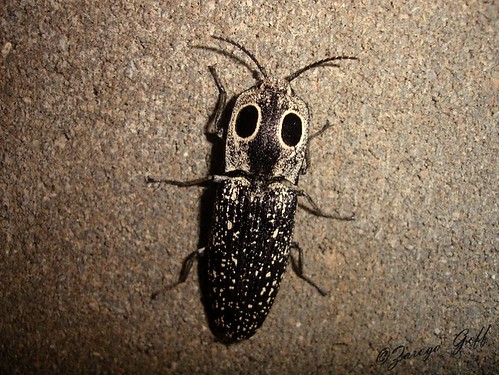That's Beetles not Beatles ☺
I'm not super great photography, but I'm trying to learn the art of it. I figure it doesn't matter if I get to super great... it only matters that "I enjoy photography" ☺
My favorite things to photograph are insects. They are amazing! Today I want to share with you a bit about four beetles.... I know some of you are going eww! That is okay, I'm still that way with roaches and a few other insects and understand.
I chose three good beetles and one that is harmless in adult form, but in larvae form does damage. I hope you can get past eww! and open your mind up to the fascinating world of insects.
I'll tell you a bit about each beetle before showing you a picture.
RHINOCEROS BEETLE
The rhinoceros beetle is the world's strongest insect. The rhinoceros beetle can carry 850 times its own weight. That would be like an elephant carrying 850 elephants on its back. Using its horns it can dig its way out of a sticky situation by burying itself underground, escaping danger. Adult rhino beetles eat rotting fruit and sap; in spite of their size, they don't eat very much. The larvae, on the other hand, eat a great deal of rotting wood or the compost in which they live. In spite of their fierce appearance, they are all totally harmless: they cannot bite or sting or hurt you with their horns; the females have no horns. The horn of the male is not used for protection but rather for the occasional battle with another male over a feeding site. The victorious male with the feeding site can then often attract a mate.
EYED CLICK BEETLE
Nearly two inches long and found across the eastern U.S. as far west as Texas, this gray and black and white insect is one of the largest members of the Click Beetle Family (Elateridae); the huge eyespots on its pronotum make it one of the most easily identified. These are "false eyes," of course... to scare off potential predators. The true eyes of the Eyed Click Beetle are much smaller and located at the bases of its heavily saw-toothed antennae.
Click Beetles like bees, ants, butterflies, and some other insect orders undergo a four-stage (complete) metamorphosis that includes the egg, larva (grub), pupa, and adult. Adults Click Beetles are harmless, but Click Beetle larvae cause significant agricultural and horticultural damage. Click Beetle grubs are also known as wireworms because of their elongated shape and hard exoskeletons. They live in soil or dead wood for two to ten years, depending on the species. During that time, they chow down on roots and stems including those attached to corn, potatoes, tobacco, turf grasses, garden ornamentals, and a variety of legumes.
Click Beetles when placed on their back ... or when grabbed by an insectivore ... bends its head and prothorax backward and then straightens out suddenly with a snapping motion, which results in an audible click and launches the beetle several inches into the air.
Other names for this beetle are: snapping beetle, skipjack and spring beetle.
GRAPEVINE BEETLE
The Grapevine Beetle is a member of the scarab beetle family. Scarabs are stout beetles with large heads and pronotums. Many scarabs have beautiful metallic colors. The scarab beetles' antennae are distinctive, clubbed and tipped with leaf-like plates called lamellae, that can be drawn into a compact ball, or fanned out when sensing odors. The front tibia are evolved for digging. The C-shaped larvae (grubs) are always pale yellow or white. Both adults and larvae are nocturnal.... but this one was out in daylight. The adults like grapevines (which they do very little damage to) and at night they like to gather around lights.
They also known as Spotted June Beetle or the Spotted Pelidnota
LADYBUG
In Europe, during the Middle Ages, insects were destroying the crops, so Catholic farmers prayed to the Virgin Mary for help. Soon the Ladybugs came, ate the plant-destroying pests and saved the crops! The farmers began calling the ladybugs "The Beetles of Our Lady", and they eventually became known as "Lady Beetles"! The red wings represented the Virgin's cloak and the black spots represented her joys and sorrows. Of course they are not all ladies ☺
There are hundreds of different kinds of ladybugs over the world. There are about 500 different kinds in the United States and about 5000 world wide. They come in all different colors.... reds, yellows, orange, gray, black, brown and even pink.
You may have had ladybugs invade your home or a family or a friend's home. They are only trying to find a warm place. They get in through cracks in floor boards and around windows. Keep your home in good repair and you won't be swarmed with them.
Ladybugs eat Aphids they also feed on other soft bodied insects that feed on plants. One ladybug can eat up to 50 aphids a day. Ladybugs are your garden's friend!
The first picture below is the larvae of a Multicolored Asian Lady Beetle. It isn't as pretty as the adult pictured.
Also known as Lady Beetle and Ladybird.
I hope you got over some of your eww! and enjoyed hearing about these four beetles.
I will include something about The Four Beatles. When I was in Jr. High School there were trading cards of the Beatles. I still have two of them hidden away somewhere... umm somewhere ☺
Ladybug
Lady bug wears
An orange cape.
It opens up
And changes shape -
Now two wings lift her
into the air.
I wish I had
Such a cape to wear!
-- Dee Lillegard


















I learned a lot from you today and your photography is wonderful. You are right, ladybugs are my friends.
ReplyDeleteYes..it doesn't matter if you are GOOD at it (which it sure seems you are...great photos!) but it DOES matter that you enjoy it. And the more you enjoy it, the better you will become!
ReplyDeleteZaroga you are an incredible photographer! Great pictures of the beetles even though they make me go ewe...except for the ladybug. :) I found two ladybugs in my home the other day and I'm trying to figure out how they got in. The sad thing was that they were dead. :( I'm wondering if one of the cats got 'em.
ReplyDeleteI think your photography is pretty GREAT! These are amazing photographs of the beetles. It is amazing what a difference it makes when someone knows what they are doing when making a picture....mine don't even look like the same colors. Of course, alot has to do with the quality of the camera also.
ReplyDeleteThat's an A-1 post and your pictures are gorgeous! I think I have a picture of that first one.
ReplyDeleteYou should hunt up that card and show it on here!!
How cool that we share the same interest in photographing insects! I checked books out in the kids section of our library and got some super facts! I really enjoy your photos! I love to do butterflies, bees and wasps.
ReplyDeleteThe most beautiful pictures!! What kind of camera do you use? I can't imagine how much better you could get. Keep up the good work. Sharon
ReplyDeleteGreat shots! I'd say your doing pretty darn good with the photography!!
ReplyDeleteYou did a great job. I love all the photos.
ReplyDelete